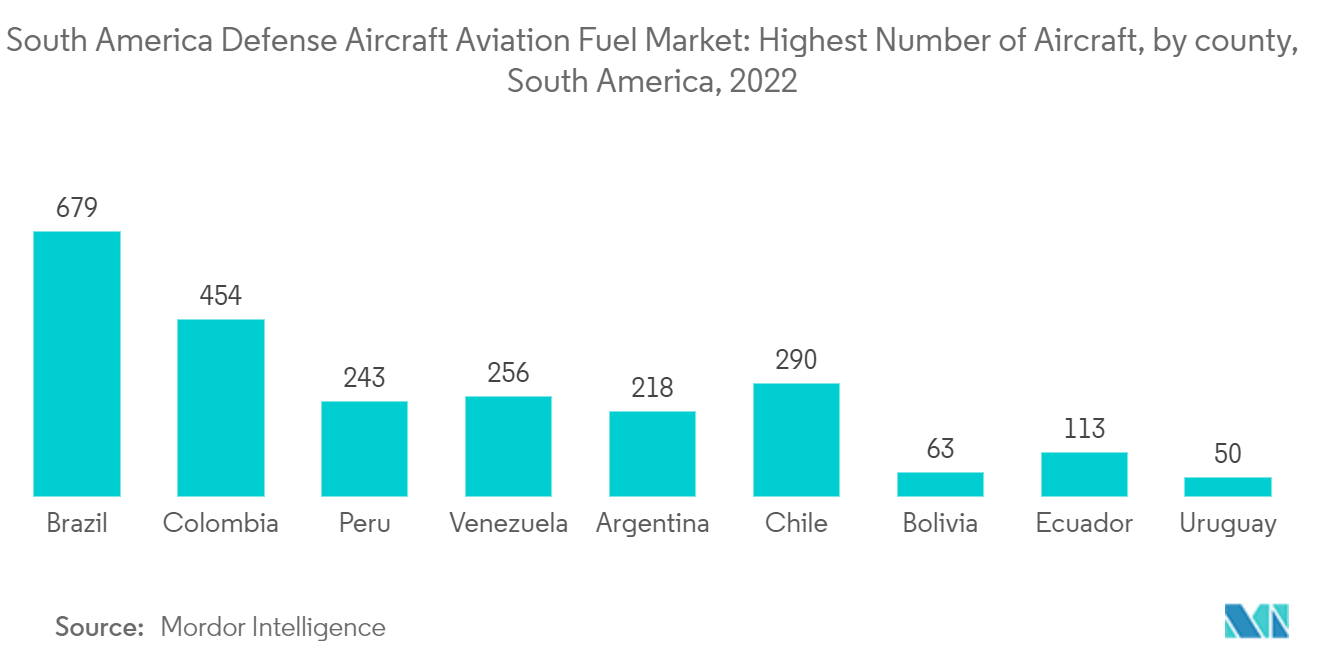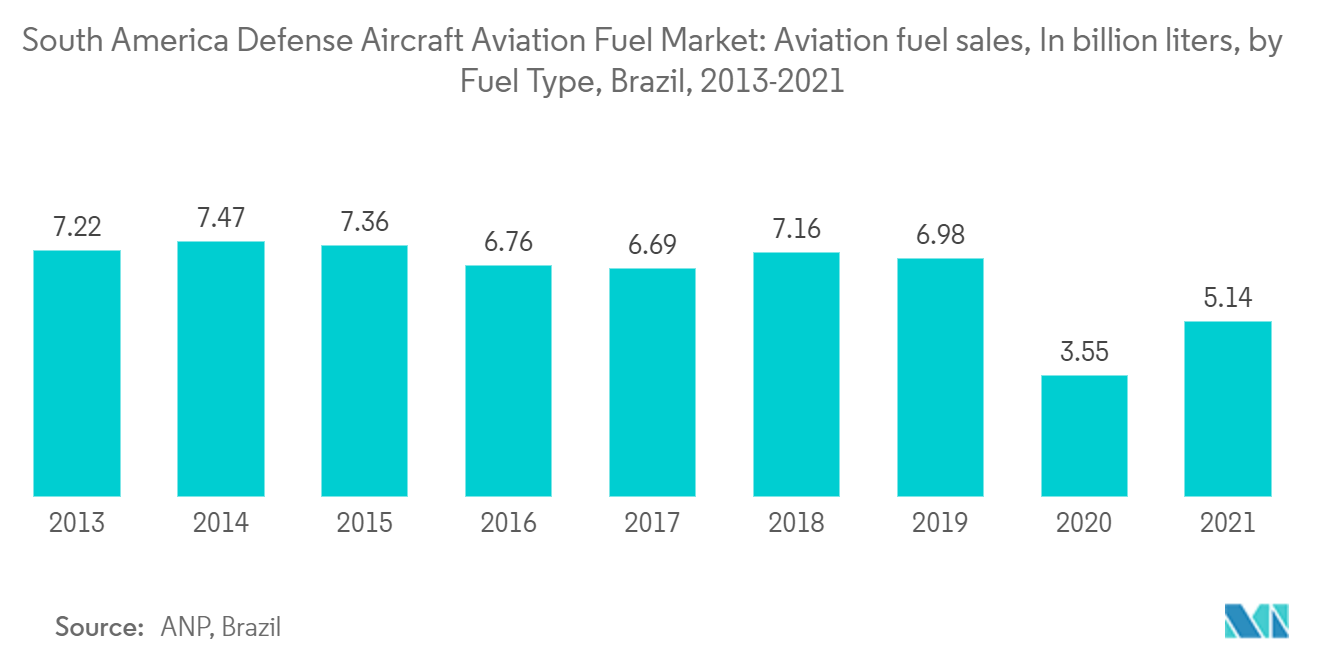Market Trends of South America Defense Aircraft Aviation Fuel Industry
Air Turbine Fuel to Dominate the Market
- Defense expenditure was expected to grow between 3 and 4% in 2022 as governments in the region continued to modernize and recapitalize their militaries. Subsequently, the defense aviation sector is also expected to increase, paving the way for the addition of new aircraft in the defense sector.
- The governments of many countries maintain separate specifications for jet fuel for military use. The reasons for different specifications include the operational and logistical differences between the military and civilian systems and the additional demands high-performance jet fighter engines place on the fuel.
- In 2022, Brazil was expected to have the highest number of military aircraft (679 units), followed by Columbia (454 units) and Chile (290). However, the United States, Europe, or Russia all produce a lot of aircraft for South American nations.These aircraft are using air turbine fuel (majorly jet A-1 fuel) and, therefore, are likely to drive the South American defense aviation fuel market during the forecast period.
- On September 22, 2021, the Argentinian Ministry of Defense (MoD) announced that, by means of a Public Credit Operations Authorization Note, it requested the inclusion in the 2022 Budget of the authorization to manage credit for up to USD 664 million for the acquisition of multipurpose fighter aircraft for the surveillance and control of the air space. All the aforementioned points are likely to increase and strengthen the region's air force capacity, thus increasing the demand for aviation fuel from the new aircraft.
- In turn, factors such as operating technology and government regulation are driving air turbine fuel, which is expected to drive the South American defense aviation fuel market.

Brazil to Dominate the Market
- Brazil is the largest consumer of aviation fuel in South America. The products specified for use in aircraft in the country are aviation kerosene (QAV), aviation gasoline, and alternative aviation kerosene (alternative QAV). The country has the most significant air force and navy in the region, with a total of 679 military aircraft.
- The sales of total aviation fuels remained stable in the past few years, with 5.14 billion liters of aviation diesel sold in 2021 and 40.5 billion liters of aviation gasoline sold in the same year, of which only 6% to 8% were used for defense purposes.
- Further, in South America, Brazil is expected to pioneer the development of renewable fuels from sugarcane, which are expected to replace traditional jet fuel. Currently, although there are no specific federal policies in place for sustainable aviation fuel (SAF), initiatives are in place at the state level.
- Over the years, many organizations, such as The Boeing Company, have been working aggressively to initiate the supply of sustainable aviation biofuels while reducing Brazil's carbon emissions.
- This, in turn, is likely to boost the defense aviation fuel market in the country, which is expected to support the growth of the South American defense aircraft aviation fuel market during the forecast period.



